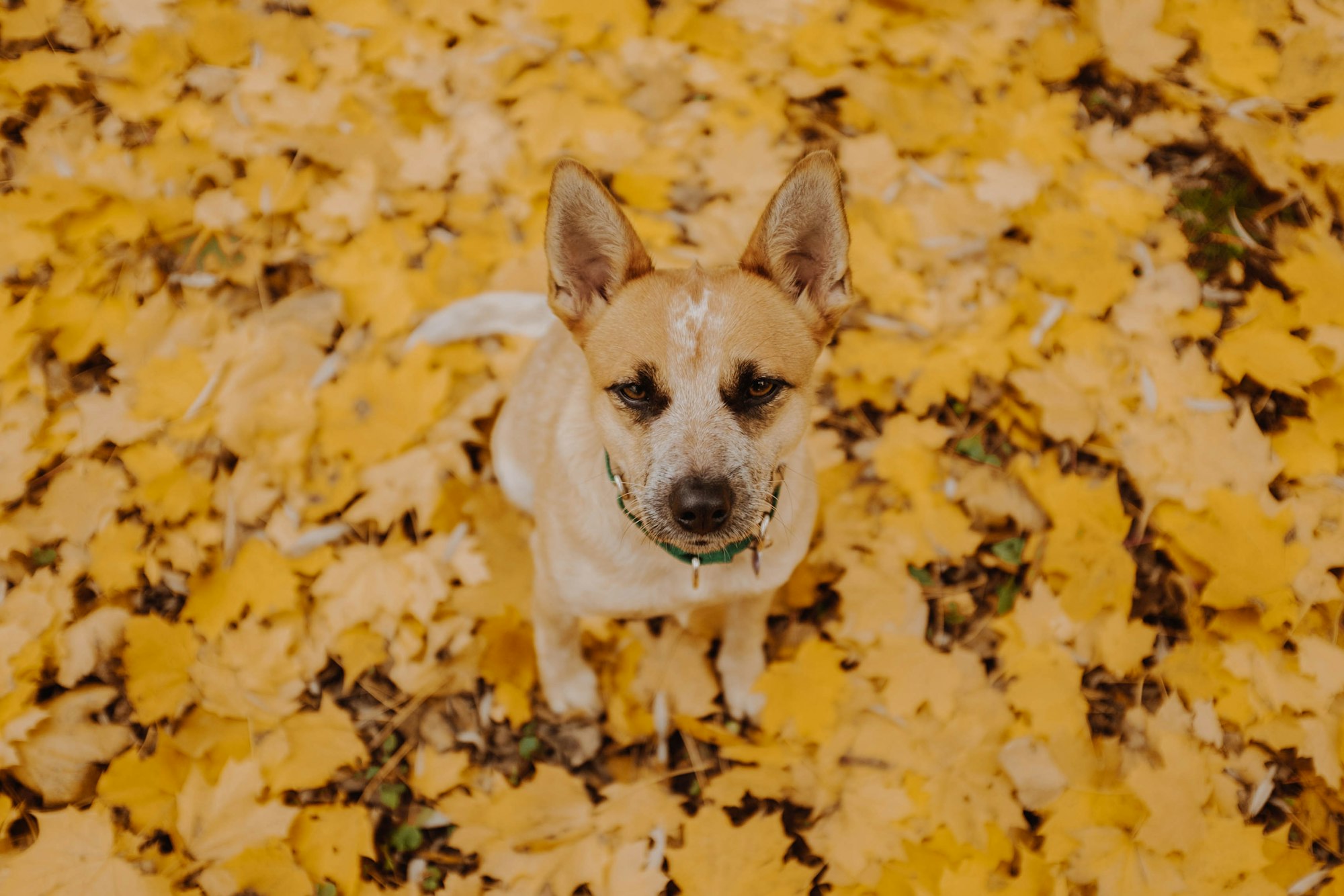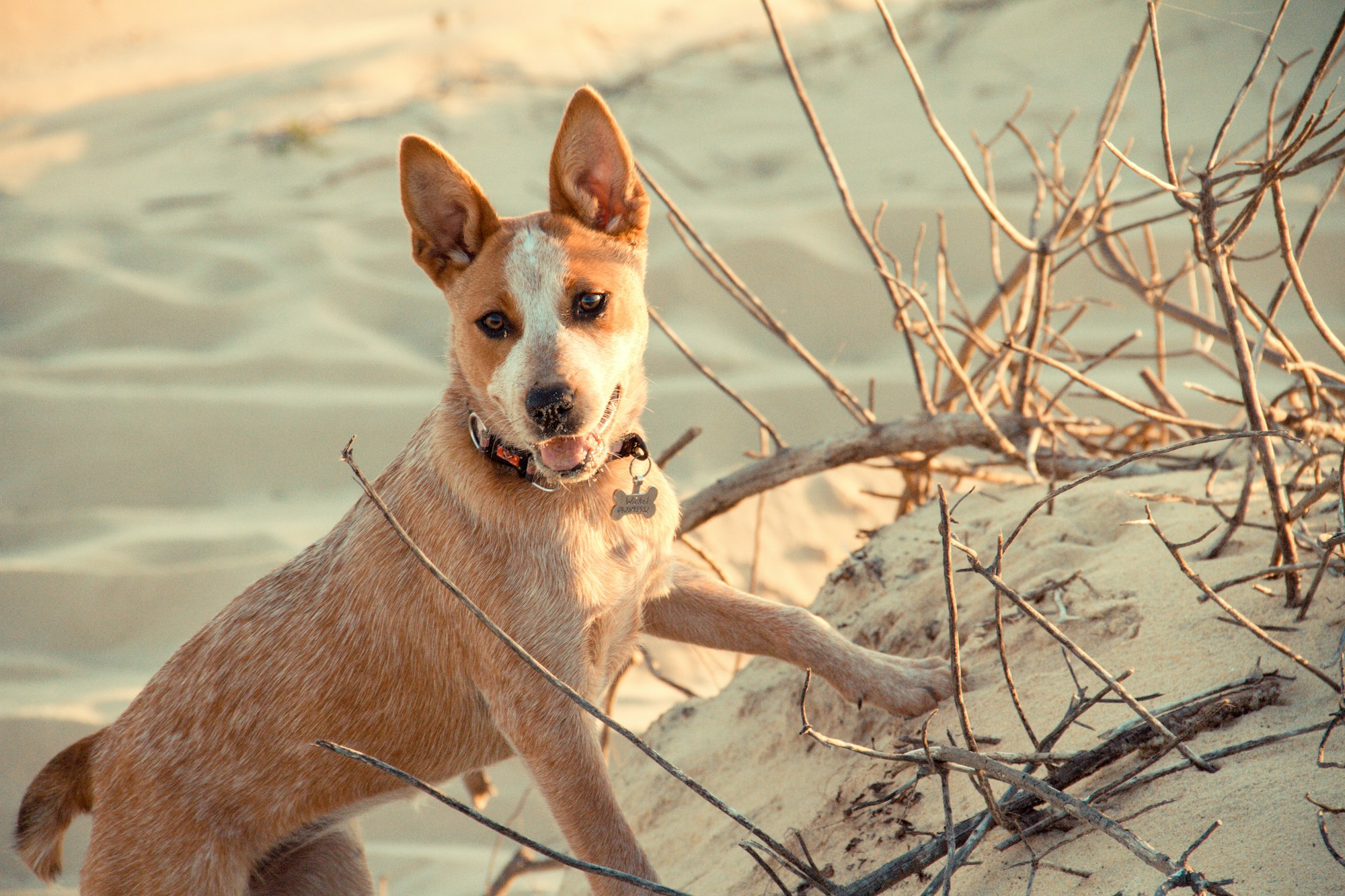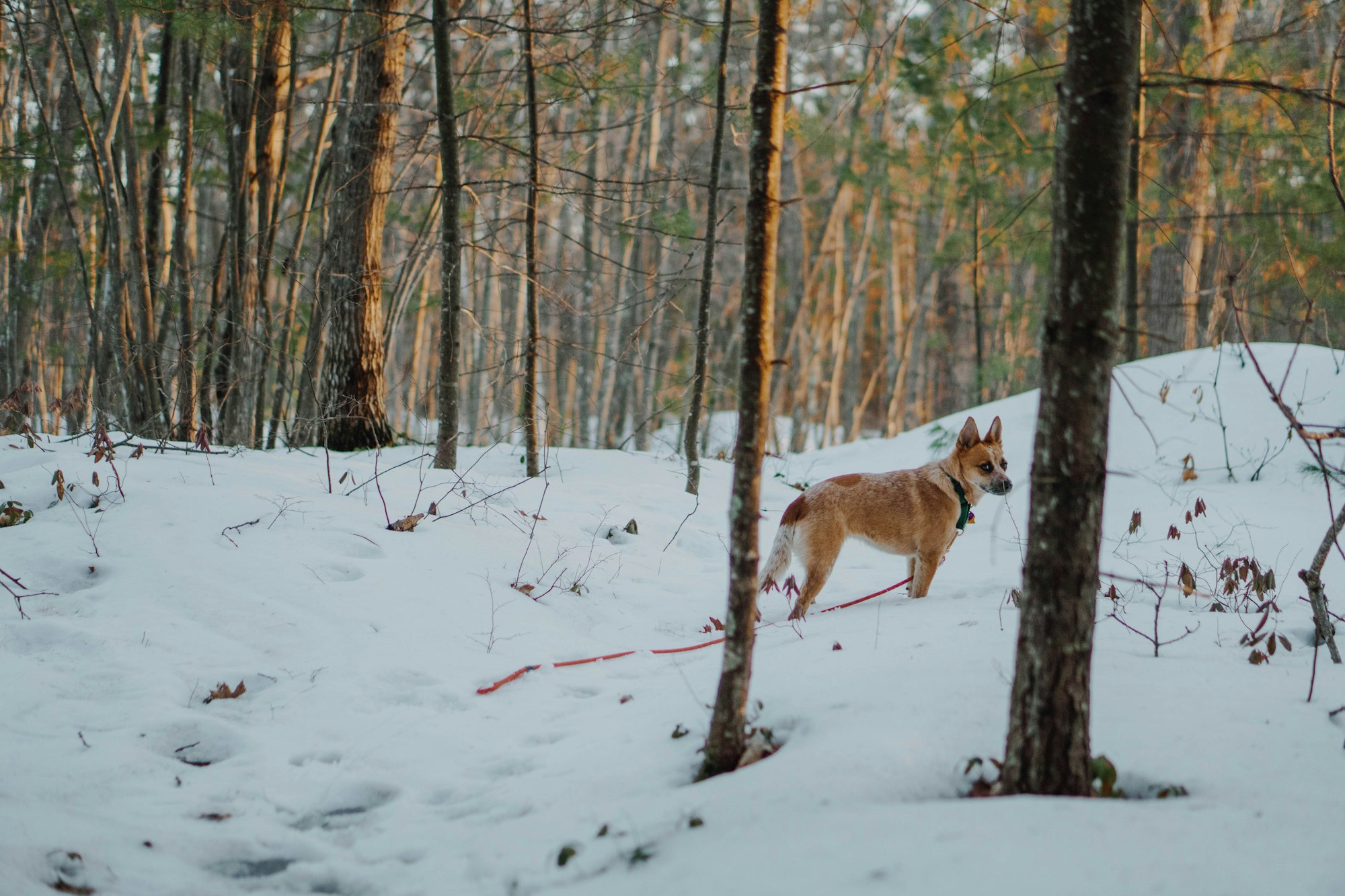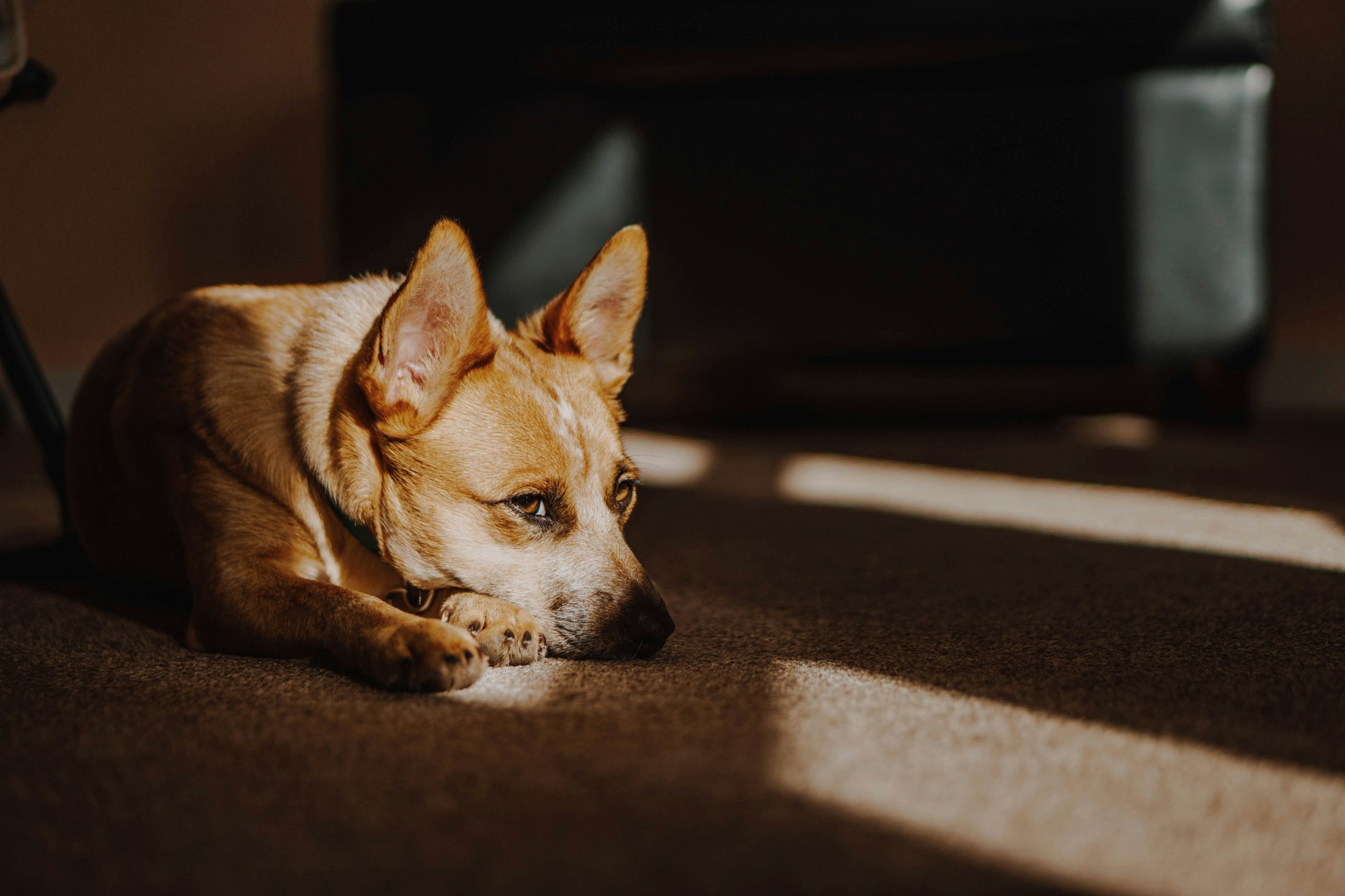Are you ready to dive into the world of Red Heelers, the amazing Australian cattle dogs that can steal your heart with their intelligence, loyalty, and undeniable charm? Then buckle up, because we're about to embark on a playful yet professional exploration of this captivating breed.
We'll delve into their history, characteristics, and quirks so that you can get an understanding of this beautiful companion. So grab a comfy seat and get ready to meet the Red Heeler, a breed that might just have you howling with delight.

The Red Heeler's Storied Past
The Red Heeler, also known as the Australian Cattle Dog, has a rich and fascinating history that spans back to the 19th century. When European settlers arrived in Australia, they brought their livestock and herding dogs with them. However, the traditional herding dogs struggled to adapt to the harsh Australian environment and the unique challenges of handling Australian cattle.
In an effort to create a more resilient and effective herding dog, breeders began to experiment with crossing different breeds. Key figures in this process were George Hall and his family, who initially crossed the native Australian Dingo with their Smithfield herding dogs. The result was a dog that had the endurance and intelligence of the Dingo combined with the herding abilities of the Smithfield.
Throughout the years, the Halls continued to refine the breed, introducing other working dogs such as the Scottish Highland Collie, the Dalmatian, and the Bull Terrier into the mix. The culmination of these efforts led to the development of the Red Heeler as we know it today – a hardworking, intelligent, and loyal companion.
Birth of a Remarkable Breed
The Red Heeler, also known as the Australian Cattle Dog, was born out of necessity and the desire to create a breed that could handle the unique challenges of the Australian outback. The breed's early development was centered around the need for a dog with the physical stamina, intelligence, and herding ability required for managing large, unruly cattle over vast distances.
Through a series of selective breeding experiments, the Red Heeler was carefully crafted to possess the traits most desirable in a working cattle dog. The breed's distinct appearance – a striking red coat with various shades of mottling or speckling – is a result of the various breeds that were introduced into its lineage over time.
Nowadays, the Red Heeler is not only celebrated for its incredible herding abilities but also as a loyal and loving companion. The breed's versatility has made it popular in various dog sports, such as agility, obedience, and even as a search and rescue dog.
The Unique Traits of Red Heelers
The Red Heeler is a truly remarkable breed, boasting a range of characteristics that make it stand out from the crowd. One of the most noticeable features of the breed is its eye-catching red coat, which is dense, weather-resistant, and relatively low-maintenance. Their compact, muscular build and alert expression give them an air of strength and agility.
When it comes to their temperament, Red Heelers are known for their intelligence, loyalty, and strong work ethic. They are highly trainable and have an innate ability to problem-solve, making them fantastic working dogs and companions. However, it's worth noting that their high energy levels and need for mental stimulation make them best suited for an active family or owner who can provide ample exercise and engagement. Heelers may enjoy items like a flirt pole to help work out their energy.
Striking Looks and Stature: What Does a Red Heeler Look Like?
The Red Heeler is a medium-sized, well-proportioned, and sturdy dog that boasts an attractive and athletic appearance. Their body is slightly longer than it is tall, with a level topline and a moderately broad chest. They possess strong, muscular legs and a well-rounded, powerful rear end, which contributes to their agility and endurance.
Their head is broad and slightly rounded, with a moderate stop and a strong, square muzzle. The Red Heeler's ears are wide-set, medium-sized, and pricked, giving them an alert and attentive expression. Their eyes are oval-shaped and display an intelligent, curious gaze. The breed's tail is typically set low, and when at rest, it hangs with a slight curve.

Shades of Red: The Heeler’s Hues
As the name suggests, the Red Heeler's coat color is primarily red, with various shades of mottling or speckling. The red base color can range from a lighter, more subdued hue to a deep, rich red, and may be accompanied by blue, black, or tan markings on the face, legs, and chest. It's not uncommon for Red Heelers to have a mask-like pattern on their face, with darker fur around their eyes and a lighter muzzle.
The Red Heeler's Distinctive Coat
The Red Heeler's coat is a standout feature of the breed. They possess a double coat, with a short, dense undercoat and a longer, rougher outer coat. The outer coat is weather-resistant, providing protection from the elements and allowing the breed to thrive in various climates. While their coat is relatively low-maintenance, regular brushing is recommended to keep it in optimal condition and to reduce shedding.

Personality and Disposition of the Red Heeler
The Red Heeler's temperament is marked by intelligence, loyalty, and an unwavering work ethic. Their natural herding instincts make them highly observant and responsive to their environment, with a keen ability to anticipate and react to potential threats or challenges.
As companions, Red Heelers are incredibly loyal and form strong bonds with their families. They are known to be protective of their loved ones and can be reserved or cautious around strangers. However, with proper socialization and training, they can learn to be more accepting of new people and situations.
It's essential to keep in mind that heeler dogs are high-energy with a need for physical and mental stimulation. Boredom and pent-up energy can lead to undesirable behaviors, so it's crucial to provide ample opportunities for exercise, training, and mental enrichment to keep your Red Heeler happy and well-behaved.
The Longevity of Red Heelers
Red Heelers are known for their relatively long lifespan, typically ranging between 12 to 15 years. Of course, this can vary depending on factors such as genetics, lifestyle, and overall health. To ensure your Australian cattle dog lives a long, happy, and healthy life, it's essential to provide proper nutrition, regular exercise, and routine veterinary care.
A well-balanced diet that meets the specific nutritional requirements for your dog's size, age, and activity level is crucial for maintaining overall health. Regular exercise not only keeps your Red Heeler physically fit but also helps to prevent obesity, which can contribute to various health issues. Scheduling annual vet check-ups, staying up-to-date on vaccinations, and providing regular dental care are all important aspects of maintaining your dog's well-being.

Potential Health Concerns of the Red Heeler
While Red Heelers are generally a robust and healthy breed, they can still be prone to certain health issues, as with any dog. Some of the more common health concerns associated with the breed include:
Hip Dysplasia: This is a genetic condition in which the hip joint doesn't develop correctly, leading to arthritis and mobility issues. Regular check-ups and maintaining a healthy weight can help manage this condition.
Progressive Retinal Atrophy (PRA): PRA is a group of degenerative eye disorders that can eventually lead to blindness. Responsible breeding practices can help reduce the risk of this condition, and early detection can help manage its progression.
Deafness: Red Heelers can be prone to congenital deafness, which can be detected early through BAER (Brainstem Auditory Evoked Response) testing.
Elbow Dysplasia: Similar to hip dysplasia, elbow dysplasia is a developmental disorder that affects the elbow joint and can lead to arthritis and pain. Regular check-ups and maintaining a healthy weight can help manage this condition.
It's essential to choose a reputable breeder who conducts health testing on their breeding stock to minimize the risk of genetic health issues. Regular veterinary care and monitoring your Red Heeler's health can also help identify and address potential concerns early.
Daily Life with a Red Heeler
Life with a Red Heeler can be a rewarding and fulfilling experience, as they are known for their loyalty, intelligence, and strong work ethic. However, it's essential to be prepared for the unique challenges and responsibilities that come with owning this high-energy breed.
Daily exercise is a must for Red Heelers, as they have a natural drive to work and a strong desire for physical activity. A combination of walks runs, and play sessions will help keep them physically and mentally stimulated. In addition to physical exercise, engaging in activities that challenge their minds, such as puzzle toys, obedience training, or dog sports, can help keep your Red Heeler happy and well-behaved.
Socialization is another critical aspect of daily life with a Red Heeler. Exposure to new people, animals, and environments from an early age can help them develop into well-rounded, confident, and friendly dogs. Positive reinforcement training is highly effective with this intelligent breed, and regular training sessions can strengthen the bond between you and your Red Heeler while also reinforcing good behavior.
Finally, it's important to provide your Red Heeler with a loving and stable home environment. Consistency in routine, boundaries, and expectations will help your dog understand their role in the family and feel secure in their surroundings. With proper care, love, and attention, your Heeler can become a cherished member of your family for many years to come.

Exploring the Heeler Color Spectrum
While the Red Heeler is a striking breed in its own right, it's worth noting that Australian Cattle Dogs come in other colors as well. The most common alternative to the Red Heeler is the Blue Heeler, which features a blue-gray coat with black, blue, or tan mottling or speckling. The Blue Heeler shares the same breed characteristics, history, and temperament as the Red Heeler, with the primary difference being their coat color.
In addition to the Blue and Red Heelers, Australian Cattle Dogs can also be found in rarer color variations, such as chocolate, cream, or even brindle. While these colors are less common, they still showcase the same remarkable qualities and charm that make the Heeler breed so beloved.
Conclusion
The Red Heeler is an extraordinary breed that combines beauty, intelligence, and athleticism into one captivating package. Their unique appearance, loyal nature, and high energy levels make them an excellent choice for active individuals or families who are willing to invest time in training, socialization, and exercise.
While the Red Heeler may not be the ideal breed for everyone, those who can provide a loving, structured, and engaging environment will find a devoted and hardworking companion in this remarkable dog. Whether working on a ranch, participating in dog sports, or simply providing companionship, the Red Heeler is sure to make a lasting impression and become a cherished member of the family.
For more helpful articles about pet-parenting tips, check out the Off Leash blog at TryFi.com.
Want to know more about TryFi.com? The Fi Dog Collar is a GPS-tracking collar that not only keeps track of your dog’s location, activity levels, and sleep patterns, but it also alerts you if your dog escapes your backyard. This is the fastest way to find your dog after an escape. Try the Fi Dog Collar today!

